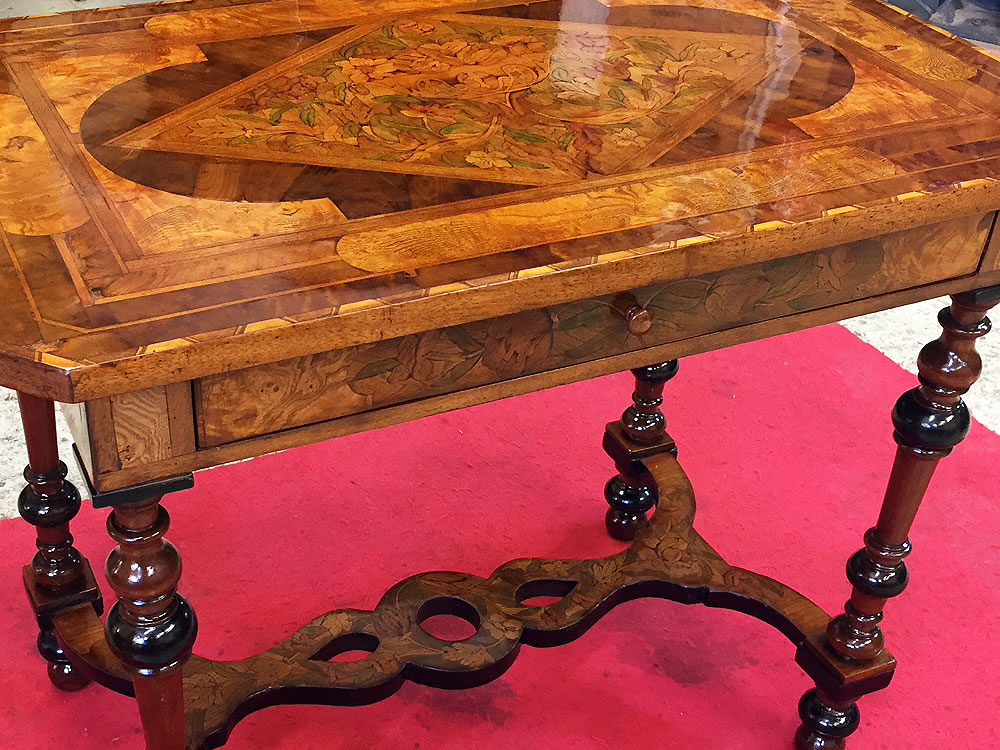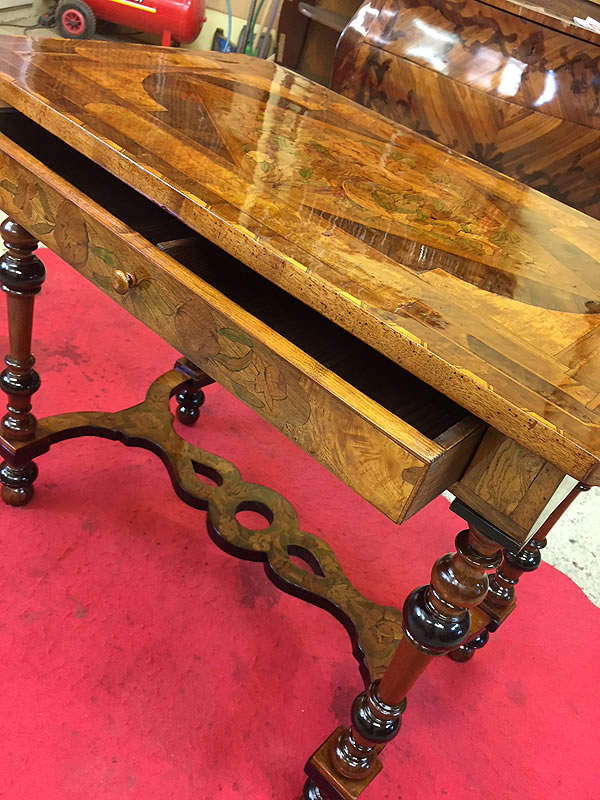Small 17th century table with a floral marquetry This table has a variety of indigenous veneers, in the manner of the Hache family’s work in Grenoble (walnut cut along the grain, walnut burl, ash, plum, sycamore and boxwood). The table has turned legs, connected at the base by a strut with a floral marquetry in the same spirit as that on the tabletop.
I removed the marquetry top to faciliate replacing the many missing floral parts. It was also necessary to remove the strut that was only held in pace by metallic supports.
I replaced the missing pieces of veneer that made up the bouquet of flowers within the lozenge as well as in the frames and the border mouldings that form a ribbon. The same went for the strut with its floral marquetry that connects the turned legs. I refilled the different gaps and missing pieces, fine sanded and gave it a finish. It was necessary to enhance the darkened part, typical to this king of furniture, notable on the turned legs. I refreshed the tint in some parts and sponge-applied a varnish to the whole piece before replacing the marquetry top.







